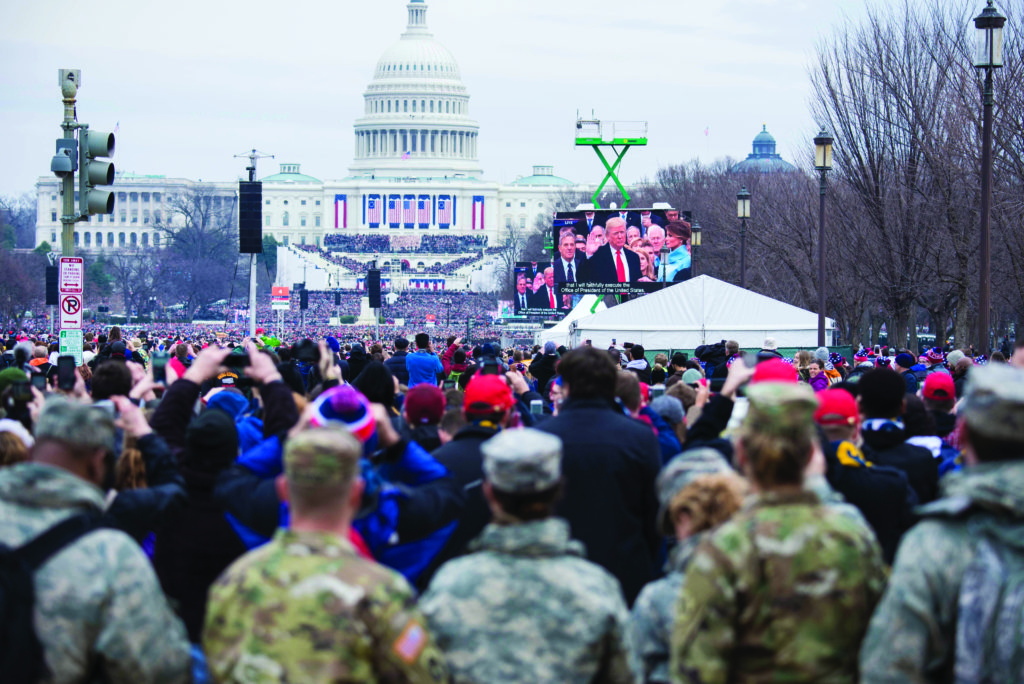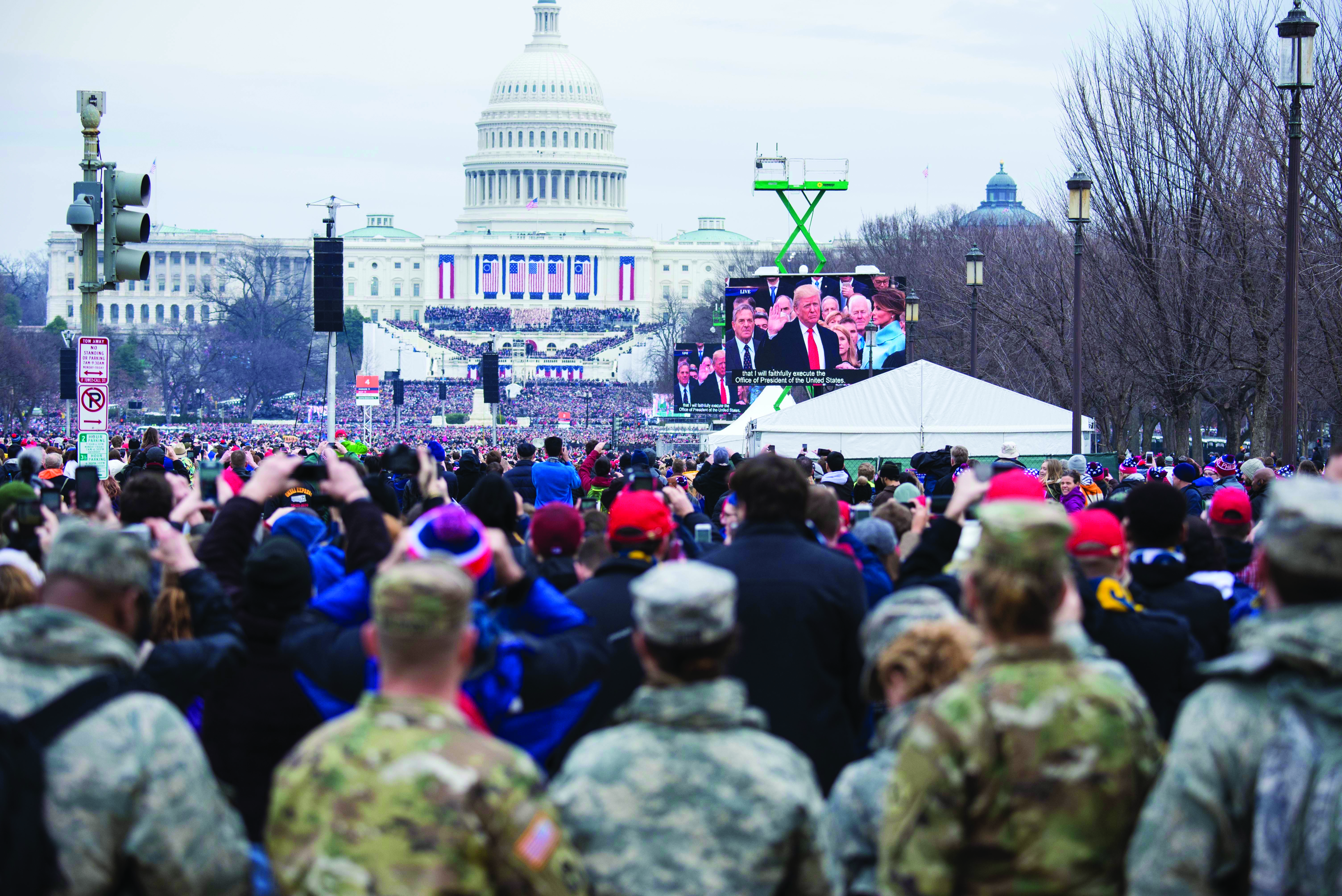
Jan. 20 marked the day when Donald Trump traded in the title of President-elect for leader of the free world. Much like his campaign, Trump’s inauguration was atypical in every respect.
The 45th presidential inauguration was record-breaking in its funding: Trump’s inaugural committee raised north of $90 million in private donations, more than both of former President Barack Obama’s committees combined.
With the estimated $110 million in tax contributions, the overall price tag of the inauguration was not unusual for first term presidents.
The event posted unusually low attendance numbers. The presidential oath is traditionally taken on the steps of the Capitol Building and followed with a parade down Pennsylvania Avenue, but the evening ceremonies were lacking compared to past inaugurations.
Donald and Melania Trump plan to make appearances at only three official balls, whereas Obama attended ten at the commencement of his first term.
The parade also experienced major changes. Steve Ray, a D.C. based freelance announcer and Trump campaign volunteer replaced Charlie Brotman, who announced every inaugural parade since Eisenhower’s second term.
Celebrity guests and performances were also missing. A list of celebrities who declined attendance included A-listers such as Elton John, Celine Dion, KISS, Mötley Crüe and Ice T.
Stars were not the only boycotters of Trump’s inauguration: at least 60 House Democrats did not attend the ceremonies, a trend sparked by the recent Twitter feud between the President-elect and Congressman John Lewis.
Lewis, the respected civil rights icon told NBC that he doesn’t see Trump as a “legitimate” leader in light of the Russian interference in the election, and will not be attending the inauguration ceremonies.
“You cannot be at home with something that you feel that is wrong,” Lewis said.
By the following day Trump had fired back on Congressman Lewis, tweeting that he was “all talk, talk, talk – no action or results. Sad.”
Many other Democrats followed Lewis in the wake of Trump’s backlash, including Florida Representatives Alcee Hastings and Darren Soto.
“I am deeply disappointed with Trump’s attacks against civil rights hero John Lewis and will not be attending the inauguration as a result,” Soto told WFTV 9.
The resulting Democratic absence is not unprecedented, however. Lewis, among others, did not attend President George W. Bush’s inauguration.
Trump has publicly responded to the missing legislators by stating that the empty seats will instead be given to the public.
As for the drought of prospective celebrities, he spoke on his plans to keep the ceremonies simple and close to home.
“I don’t want the celebrities, I want the people, and we have the biggest celebrities in the world there,” Trump said in an interview with Fox News, weeks before the event.
General attendance followed suit with an estimated 800,000 to 1,000,000 guests, compared to Obama’s first inaugural attendance total of 1.8 million.
A large portion of the guests that poured into the capitol on inauguration day were protestors attending one of the many displays of defiance throughout the city.
The National Parks Service gave 27 groups a permit for protesting, alongside dozens of informal public displays.
The largest planned protest was the Women’s March, where 500,000 people come together in the streets of D.C. on Jan. 21 to show the new administration that women’s rights are human rights.
Women’s March also helds affiliate demonstrations in other major U.S. cities such as New York, Boston and St. Petersburg.
Another major protest was #Trump420 held by DCMJ, a marijuana legalization group. Four minutes and twenty seconds into Trump’s inaugural address, the demonstration attendees simultaneously lit the 4,200 provided joints in support of cannabis legalization.
A number of large protests were held outside of D.C. as well, including Bridge Together Golden Gate, which aimed to “create a human bridge of togetherness,” as well as Seattle’s Resist Trump: Occupy Inauguration.
St. Petersburg hosted a number of public demonstrations. Activists and public speakers gathered to display their political dissatisfaction at The People’s Inauguration, held at Williams Park Jan. 20
Much of the dissatisfaction was also apparent in recent polls: a Gallup poll released two weeks before inauguration shows Trump with a 51 percent disapproval rating before entering office and 44 percent approval.
The same poll noted that these numbers were historically low, with Obama, Bush and Clinton having 12, 25 and 18 percent dissatisfaction before entering office, respectively.
After two terms of a Democratic Oval Office, the country has endured an astoundingly polarizing election and now has the most controversial President in decades.
With Republicans holding the majority in the Senate, the House and the presidency, this is the first time the United States has had a unified government since President George W. Bush’s office.



